Release Date :
Reference Number :
DAVOR-2023-001
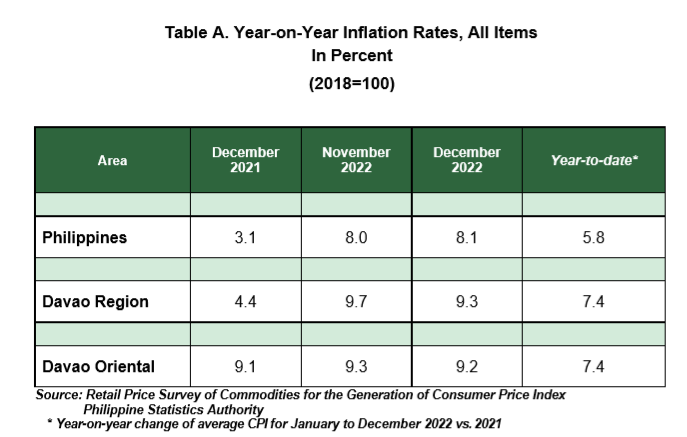
The inflation in Davao Oriental decelerated to 9.2 percent in December 2022, from 9.3 percent in November 2022. In December 2021, the inflation was registered at 9.1 percent. This brings the year-to-date inflation for 2022 at 7.4 percent. (Tables A and B, and Figure 1)
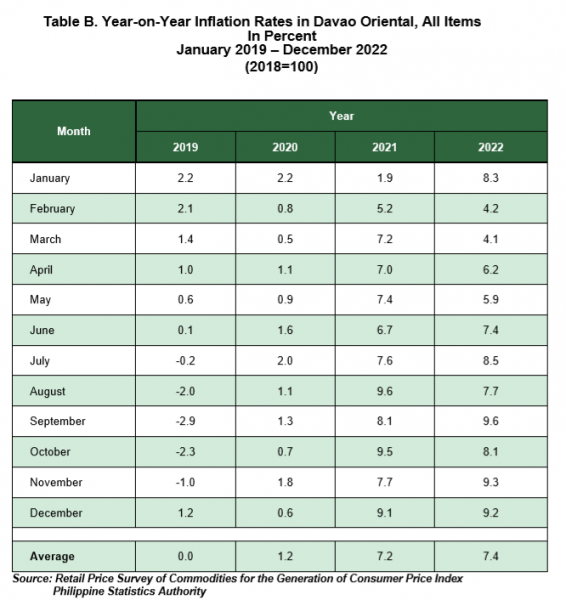
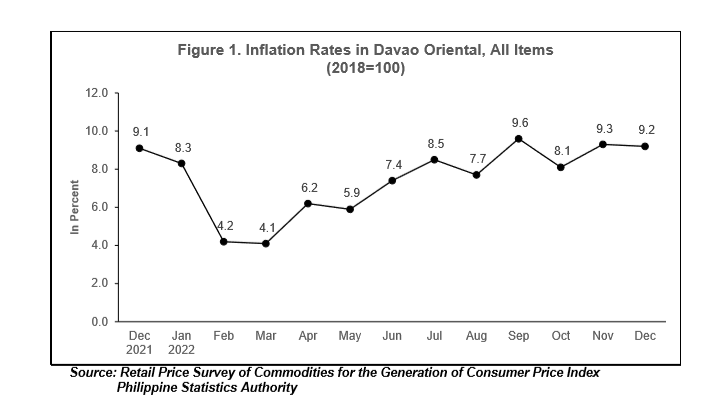
The slowdown in the province’s inflation was mainly due to slower annual increase in the index for food and non-alcoholic beverages at 9.0 percent, from 10.0 percent in November 2022. Also contributing to the downtrend is the lower annual increment in the indices of housing, water, electricity, gas, and other fuels at 10.3 percent; and health at 3.1 percent.
On the contrary, higher year-on-year mark-ups were noted in the indices of the following commodity groups:
a. Clothing and footwear, 7.0 percent;
b. Furnishings, household equipment and routine household maintenance, 5.2 percent;
c. Transport, 12.5 percent;
d. Recreation, sport and culture, 8.0 percent;
e. Restaurants and accommodation services, 9.3 percent; and
f. Personal care, and miscellaneous goods and services, 8.4 percent.
Meanwhile, the indices of information and communication, education services and financial services retained their respective annual growth rates in November 2022. (Tables C)
Inflation for food slowed down to 9.1 percent in December 2022, from 10.2 percent in the previous month. In December 2021, food inflation was observed at 10.8 percent. (Table D)
Annual rates declined further in the indices of corn at 6.8 percent; meat and other parts of slaughtered land animals, 6.5 percent; and fish and other seafood, at 1.4 percent. In addition, annual decreases were still noted in the indices of fruits and nuts at 15.5 percent and sugar, confectionery and desserts at 63.2 percent.
The rest of the food groups such as rice and vegetables registered faster annual increases. (Table D)
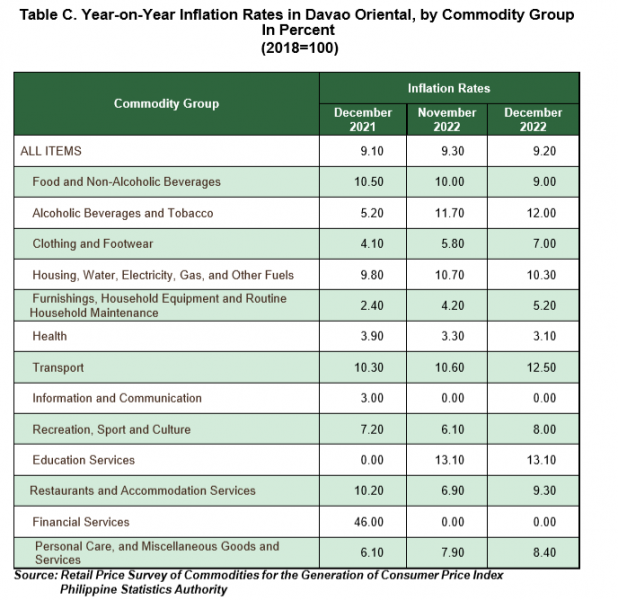

Among the provinces in Davao Region, Davao de Oro posted the highest inflation rate of 12.8 percent, while Davao del Norte remained as the province with the lowest inflation at 6.6 percent. (Table E)
During the period, Davao Oriental’s inflation was equal with Davao Occidental’s average of 9.2 percent but lower than Davao Region’s average of 9.3 percent.
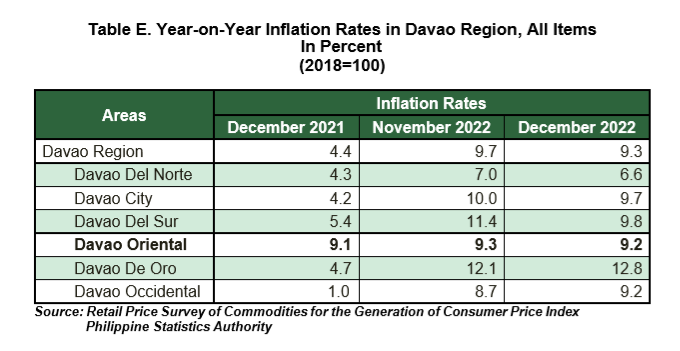
Purchasing Power of Peso (PPP) stood at 83 centavos
Purchasing Power of Peso (PPP) shows how much the peso in the base period is worth in the current period. It is computed as the reciprocal of the CPI for the period under review multiplied by 100. The PPP is inversely related to inflation rate. Thus, as the inflation rate increases, PPP declines.
The PPP in December 2022 stood at 83 centavos. This means that the amount of PhP100.00 in 2018 is equivalent to PhP83.00 in December 2022. Similarly, you will need PhP120.90 to purchase the same set of goods and services worth Php100.00 in 2018. In December 2021, the PPP was at 90 centavos. (Figure 2)
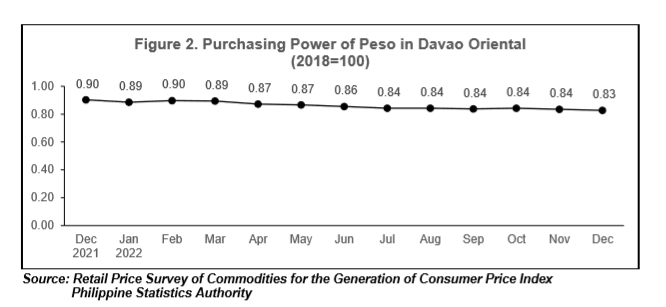
TECHNICAL NOTES
Uses of CPI
The CPI is most widely used in the calculation of the inflation rate and purchasing power of peso. It is a major statistical series used for economic analysis and as a monitoring indicator of government economic policy.
Computation of CPI
The computation of the CPI involves consideration of the following important points:
a. Base Period - The reference date or base period is the benchmark or reference date or period at which the index is taken as equal to 100.
b. Market Basket - A sample of the thousands of varieties of goods purchased for consumption and services availed by the households in the country selected to represent the composite price behavior of all goods and services purchased by consumers.
c. Weighting System - The weighting pattern uses the expenditures on various consumer items purchased by households as a proportion to total expenditure.
d. Formula - The formula used in computing the CPI is the weighted arithmetic mean of price relatives, the Laspeyre’s formula with a fixed base year period (2006) weights.
e. Geographic Coverage - CPI values are computed at the national, regional, and provincial levels, and for selected cities.
Note: CPIs and inflation rates by province and selected city are posted at the PSA website (https://openstat.psa.gov.ph/).
Approved for release:
EMILY P. TOMOGDAN
(Supervising Statistical Specialist)
Officer-in-Charge
